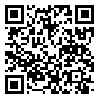Volume 17, Issue 1 (6-2024)
ijhe 2024, 17(1): 193-204 |
Back to browse issues page
Download citation:
BibTeX | RIS | EndNote | Medlars | ProCite | Reference Manager | RefWorks
Send citation to:



BibTeX | RIS | EndNote | Medlars | ProCite | Reference Manager | RefWorks
Send citation to:
Bakhtiyari A, Akbari-adergani B, Shavli-Gilani P, Karami L, Yazdanfar N, Sadighara P. Investigating the amounts and risk assessment of lead in raw milk collected from farms in Tehran province in winter, 2022. ijhe 2024; 17 (1) :193-204
URL: http://ijhe.tums.ac.ir/article-1-6873-en.html
URL: http://ijhe.tums.ac.ir/article-1-6873-en.html
Alireza Bakhtiyari1 
 , Behrouz Akbari-adergani2
, Behrouz Akbari-adergani2 
 , Parisa Shavli-Gilani1
, Parisa Shavli-Gilani1 
 , Liela Karami1
, Liela Karami1 
 , Najmeh Yazdanfar3
, Najmeh Yazdanfar3 
 , Parisa Sadighara *
, Parisa Sadighara * 
 4
4

 , Behrouz Akbari-adergani2
, Behrouz Akbari-adergani2 
 , Parisa Shavli-Gilani1
, Parisa Shavli-Gilani1 
 , Liela Karami1
, Liela Karami1 
 , Najmeh Yazdanfar3
, Najmeh Yazdanfar3 
 , Parisa Sadighara *
, Parisa Sadighara * 
 4
4
1- Department of Environmental Health Engineering, Faculty of Health, Tehran University of Medical Sciences, Tehran, Iran
2- Water Safety Research Center, Food and Drug Administration, Ministry of Health and Medical Education, Tehran, Iran
3- Iranian Institute of R&D in Chemical Industries (IRDCI) (ACECR), Tehran, Iran
4- Department of Environmental Health Engineering, Faculty of Health, Tehran University of Medical Sciences, Tehran, Iran ,sadighara@farabi.tums.ac.ir
2- Water Safety Research Center, Food and Drug Administration, Ministry of Health and Medical Education, Tehran, Iran
3- Iranian Institute of R&D in Chemical Industries (IRDCI) (ACECR), Tehran, Iran
4- Department of Environmental Health Engineering, Faculty of Health, Tehran University of Medical Sciences, Tehran, Iran ,
Abstract: (560 Views)
Background and Objective: Given the crucial role of milk and its products in human diets, it is imperative to implement effective measures to ensure the safety of milk by minimizing the presence of hazardous pollutants. This study aims to assess the concentration and potential risks associated with lead in raw milk produced in Tehran province.
Materials and Methods: This cross-sectional descriptive study involved the collection of raw milk samples from 24 diverse livestock farms in Tehran province during the winter season of 1401. The samples were analyzed for lead contamination using flame atomic absorption spectrometry. Statistical tests were applied to compare the results with international standards, and subsequent risk assessment was conducted based on the average amounts.
Results: The study revealed that none of the samples exceeded the permissible limit for lead. The mean and standard deviation of lead concentration in the samples was 7 ± 5.8 (ppb), well below the international standard. There was no significant variation in lead levels among the tested livestock farms. The Hazard Quotient (HQ) values for both children and adults were calculated to be less than 1.
Conclusion: The concentration of lead in all samples remained below the permissible limits set by Codex and the Iran Standards Organization, indicating no non-carcinogenic risks associated with milk consumption in terms of lead contamination, as suggested by the calculated HQ values.
Materials and Methods: This cross-sectional descriptive study involved the collection of raw milk samples from 24 diverse livestock farms in Tehran province during the winter season of 1401. The samples were analyzed for lead contamination using flame atomic absorption spectrometry. Statistical tests were applied to compare the results with international standards, and subsequent risk assessment was conducted based on the average amounts.
Results: The study revealed that none of the samples exceeded the permissible limit for lead. The mean and standard deviation of lead concentration in the samples was 7 ± 5.8 (ppb), well below the international standard. There was no significant variation in lead levels among the tested livestock farms. The Hazard Quotient (HQ) values for both children and adults were calculated to be less than 1.
Conclusion: The concentration of lead in all samples remained below the permissible limits set by Codex and the Iran Standards Organization, indicating no non-carcinogenic risks associated with milk consumption in terms of lead contamination, as suggested by the calculated HQ values.
Type of Study: Research |
Subject:
General
Received: 2023/12/4 | Accepted: 2024/03/17 | Published: 2024/06/10
Received: 2023/12/4 | Accepted: 2024/03/17 | Published: 2024/06/10
Send email to the article author
| Rights and Permissions | |
 |
This work is licensed under a Creative Commons Attribution-NonCommercial 4.0 International License. |



